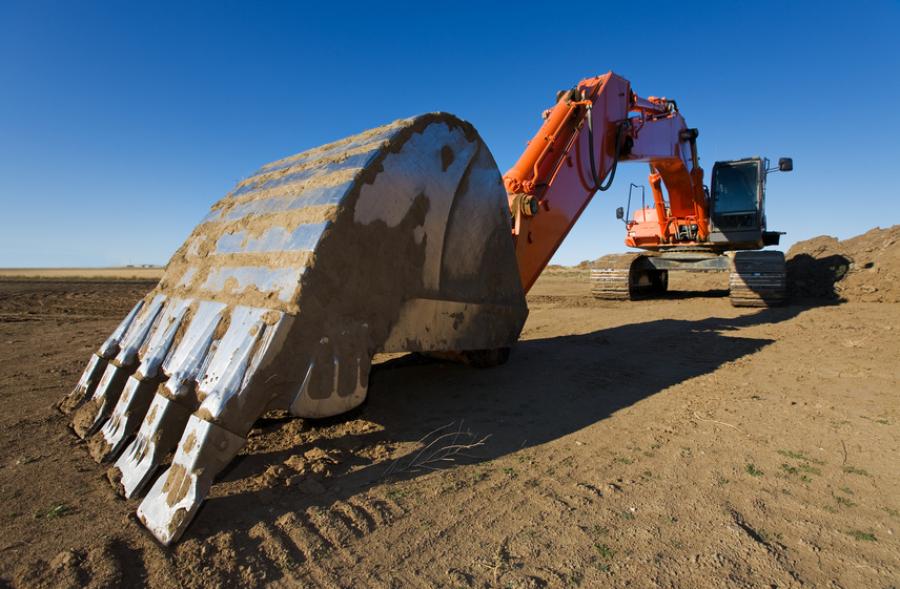Farming and construction both rank among the most likely occupations in which Americans can be killed on the job, according to the U.S. Bureau of Labor Statistics.
LEBANON, Pa. (AP) - It was twenty years ago, but Scot Zeller remembers his first day as a Pennsylvania Turnpike worker like it was yesterday. That's because he got a vivid lesson of the dangers that workers setting up construction zones face from passing cars.
“My first day on the job, one of the guys had a close call and got knocked off (the back),” Zeller said. “They said, `now you're on the back of the truck,' and I was like, `this guy just got hurt.”'
Zeller can smile about his experience now, but not every employee in dangerous occupations is so lucky - particularly if they are working for themselves or a small company.
At least two June workplace tragedies left Lebanon County grieving. Construction business owner Nathan Halteman of Bethel Township died of injuries sustained on June 20 when a 15-foot-deep trench collapsed, burying him up to his waist.
Eight days later, former Lawn-area resident Leon Stump drowned after operating farm equipment in Perry County when he accidentally fell into a reservoir containing agricultural waste, according to state police. Stump had been actively involved in Lebanon 4-H activities, so the entire Lebanon County farming community is feeling the loss, said Debbie Tice, a program assistant for the Penn State Extension whose areas of focus include farm safety.
It's far from the first time she's been personally impacted by the dangers of farming. Her own grandfather was killed when a tractor overturned, a phenomenon that is still one of the leading causes of death for farmers, she said. Her husband was once injured in a bad encounter with a cow - but she hasn't had to cope with losing a spouse or child to such a tragedy.
“I have what I think is a pretty strong faith, but you never know until you're tested like that,” she said.
Farming and construction both rank among the most likely occupations in which Americans can be killed on the job, according to the U.S. Bureau of Labor Statistics.
Nationally, there were 4,821 fatal workplace injuries in 2014, 17 percent of which involved contractors and more than 20 percent of which involved the construction sector, according to the Bureau of Labor Statistics. Twenty-six out of every 100,000 farmers died of a workplace injury in 2014, the sixth-highest rate of any profession.
However, experts say many such fatalities can be avoided if workers follow basic construction and farming safety precautions.
Safety first
In addition to being in construction, Halteman had another characteristic common to those killed in the workplace: he was self-employed. More than 1,000 of the 4,821 suffering fatal workplace injuries in 2014 nationwide worked for themselves, according to the Bureau of Labor Statistics.
Self-employed workers are less likely to be as knowledgeable about best practices and to be able to invest in the costs of expensive safety equipment, said Kim Esposito, president of the Mid-Atlantic Construction Safety Council.
In Lebanon County alone, the Harrisburg office of the Occupational Safety and Health Administration accused 24 construction companies with Lebanon County addresses of “serious” violations between July 2014 and June 2016. The violations included failures involving duty to have fall protection, ladders, head protection, and aerial lifts.
Esposito said most construction companies do put safety first, but acknowledged that there are situations where even safety-conscious employers cut corners under time or budget pressures and pay for it with an accident or OSHA fine. Even employers who do invest in proper equipment like harnesses don't always know how to use them correctly.
“Everybody gets focused on making sure their harness is in good condition, but they don't necessarily wear the harness in the right way,” she said.
Falls from improperly worn harnesses are currently the most common preventable problem the Safety Council is attempting to combat, followed by cuts that result from wearing inadequate work gloves for the type of work being undertaken, she said.
`An early grave'
Trenching cave-ins like the one that Halteman faced are also not uncommon, according to Esposito.
“Dirt is extremely heavy, and people don't realize the impact of having it up to your waist,” she said. “You only have a certain amount of time to get out of there.”
An average of 35 people each year died annually from 2000-09 in trenching or excavation cave-ins, according to the Bureau of Labor Statistics.
“Every so often, somebody takes a chance. (People think), `I've been doing this for 25 years and never had a problem,' and, boom, it happens.”
George Kennedy, vice president of safety for the National Utility Contractors Association
“One cubic yard of soil can weigh as much as a car,” warns an OSHA publication on trench safety. “An unprotected trench is an early grave.”
George Kennedy, vice president of safety at the National Utility Contractors Association, said anyone working in a trench over five feet deep should be following at least one of the `s's of trench safety:” a shoring system that uses supports to prevent the walls from caving in, a sloped trench that angles away from the center of the trench, or a shield mechanism like a trench box to prevent collapse.
Ironically, Halteman's death occurred in the midst of NUCA's June 20-24 Trench Safety Stand Down week, designed to raise awareness of trench safety concerns. However, NUCA holds training courses year round and Kennedy credits education for reductions in trench fatalities in recent years. While about 25 to 30 people each year still die in trench related collapses, the annual fatality rate used to be around 100, he said.
At least when it comes to trenching, OSHA's enforcement of its regulations have also likely helped curb the prevalence of unsafe practices, he said. Still, even experienced builders who should know better sometimes fail to take necessary safety precautions, with tragic results, he said.
“Every so often, somebody takes a chance,” he said. “(People think), `I've been doing this for 25 years and never had a problem,' and, boom, it happens.”
Trenchers also must watch out for live power lines and toxic gases emitting from the soil, Esposito said.
Traffic trouble
Construction workers on highways face an entirely different set of risks, said Turnpike district maintenance superintendent Joel Zug.
“The danger is, you get on a highway where traffic's doing 70 to 80 miles an hour, and the only thing between me and that traffic is a cone,” Zug said.
Zug is quick to emphasize that even though the job can be scary, it's actually “the safest job in the world.”
But after workers were killed in 2012 and 2014 by distracted drivers, the Turnpike launched its Operation Orange Squeeze, working with state police to enhance enforcement of speed limits and let the public know about the significant hit to your driving record caused by a workzone ticket, said Turnpike manager of marketing and business development Kelli Roberts, who helps lead the marketing campaign. In the initiative, state police clock drivers' speed from inside construction vehicles.
Because people have to pay for access, Turnpike drivers tend to be particularly aggressive, workers said. It isn't uncommon after snowstorms for salt trucks to be passed by impatient drivers who then get between the plow truck and the salt truck, Zug said.
“This road's about A to B. We want to go from A to B as fast as we can,” Zeller said.
In addition to Operation Orange Squeeze, the Turnpike has redesigned some of its trucks to limit the risk of worker injuries.
A double aluminum frame called an attenuator is placed at the back of the first vehicles a driver encounters in a construction zone - the truck displaying an arrow regarding land closures and the truck from which traffic cones are placed - to help alleviate the impact of rear-end collisions, Zug said. Twelve vehicles hit Turnpike vehicle attenuators between Jan. 1 and June 13, 2016, according to Roberts.
The vehicles used for laying cones are now outfitted with safety harnesses and a cutout set of stairs that allows workers to place cones without leaving the truck.
“We're always looking at new ideas and new ways to make things safer,” Zug said.
Still, safety initiatives have their own drawbacks. The stairs limit the worker's ability to see approaching cars, while the harness prevents a worker from quickly jumping off the truck in anticipation of a collision, Zeller said.
Farming fatalities
In addition to overturned tractors, top dangers to farmers include the weight of heavy animals like cattle, toxic chemicals, and fires, Tice said.
Young children are particularly likely to be involved in accidents, she said. Something as innocuous as a 5-gallon bucket can become a place in which toddlers drown.
The Penn State Extension promotes farm safety and helps create Lebanon County Farm and Home Safety Day each spring to teach children about common dangers, like walking behind their parents' tractors in a blind spot where the driver cannot see them.
Like construction workers, though, the fact that farmers know the dangers doesn't necessarily mean they will follow steps to avoid them while trying to make a living. When a storm is coming but a machine jams, the farmer may not want to take the extra minute to turn the machine off and step off of it before checking the problem. Tice's neighbor lost part of his arm by trying to unclog a corn picker without turning it off first, she said.
“We're the last people to take care of ourselves sometimes,” she said.
Outside of fatal injuries, farmers are also susceptible to more long-term hazards of the profession, like exposure to dust at poultry houses and loud noises from the squealing of pigs, she said.
The most dangerous jobs
These jobs had the highest rate of fatalities per 100,000 workers in 2014, the most recent year for which data is available:
.Logging workers, 109.5
.Fishers and related fishing workers, 80.8
.Aircraft pilots and flight engineers, 63.2
.Roofers, 46.2
.Refuse and recyclable material collectors, 35.8
.Farmers, ranchers, and other agricultural managers, 26.0
.Structural iron and steel workers, 25.2
.Driver/sales workers and truck drivers, 23.4
.Electrical power-line installers and repairers, 19.2
.First-line supervisors of construction trades and extraction workers, 17.9
Source: U.S. Bureau of Labor Statistics
Today's top stories
















